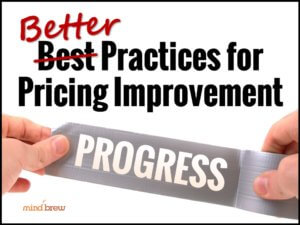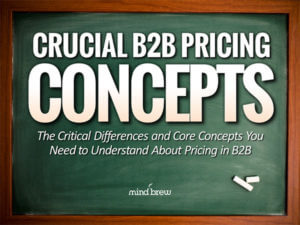For thousands of years, people have known that choosing the right course of action usually involves finding a “happy medium.”
In fact, way back in the 300s B.C., Aristotle was writing about the “golden mean” in his treatise on Nicomachean Ethics. He believed that virtues can be described as the middle state between two equally undesirable extremes. So, for example, you could think of the virtue of courage as the golden mean between recklessness and cowardice.
This principle also shows up in another great work of classic literature—the story of “Goldilocks and the Three Bears.” You know, the one about how Papa Bear’s bed was too hard, and Mama Bear’s bed was too soft, but Baby Bear’s bed was just right.
Before we even learned to read, most of us learned from our bedtime stories that the middle option is usually the one that is “just right.”
Of course, knowing that you should find a happy medium and actually achieving that happy medium are two very different things.
This is especially true when it comes to dealing with the inherit complexity in pricing. Because pricing is so complicated, most people look for a way to simplify the principles involved. But whether you are explaining pricing to someone else or just trying to wrap your own head around it, oversimplifying is a mistake. A costly mistake. That’s because taking an approach that is too simplistic can lead to a bad pricing model, such as cost-plus pricing. And these simplified models leave margin on the table, taking a huge bite out of revenues and profits.
On the other hand, some people go to the other extreme. They create pricing models with hundreds or even thousands of segments. That’s way too much work for the amount of value you’ll get from the model. Not to mention, when your pricing model gets too complex, you aren’t going to be able to explain it to the sales team, let alone get them to follow it.
Finding the happy medium between these two extremes can be tricky. But fortunately, we have a suggestion that can make it easier.
For many teams, measuring price elasticity has been the key to establishing a pricing model that finds a balance between simplicity and complexity. In basic terms, B2B price elasticity is a measure of how your sales volume will change as a result of a given pricing change. Put another way, it tells you how much you can increase prices before you will start to lose customers or how much you will have to lower prices to get more customers.
For many organizations, calculating price elasticity provides the foundation for their pricing strategy and helps them find the “happy medium” when it comes to having a segmentation model that is “just right.” To learn more about how it works, watch the webinar on B2B Price Elasticity.
If you’re having trouble coming up with a pricing strategy that is neither too simple or too complex, we also recommend two other resources: How to Explain Price Segmentation to Others and Getting the Most Out of Price Segmentation. Both of these can help you find the clarity that is in the middle ground between oversimplification and overcomplication.
















